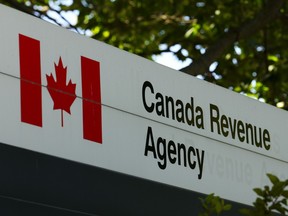Some changes may require more extensive tax-planning, such as proposed new rules for capital gains

Canadians have toasted in the new year and may want to get a head start on their tax-planning.
Recommended Videos
This year, Ottawa has brought in new tax measures. Many of the changes, such as inflation-based adjustments to tax brackets, or what your TFSA contribution room will be, are routine.
However there are other changes that may require more extensive tax-planning, for example, capital gains tax changes that could take full effect for the first time in 2025. Here’s what you need to know.
Increasing Canada Pension Plan contributions
Some Canadian workers will notice a little more is taken off their paycheques due to increases in the mandatory CPP contribution.
In 2019, the Quebec Pension Plan and Canada Pension Plan (CPP) began phasing in enhanced benefits intended to provide greater financial support for retirees.
Individual contributions and matching contributions from employers began to increase as the plan was implemented. Canadians who earn higher incomes pay an additional premium within a second tier before maxing out.
The first-tier earnings ceiling is going up to $71,300 in 2025 from $68,500 in 2024. That means that the first ceiling maximum contribution for an employee is $4,034.10. The employer pays a matching amount for a total maximum contribution per employee of $8,068.20.
The second-tier earnings ceiling is increasing to $81,200 from $73,200 in 2024. The maximum CPP contribution under the second ceiling requires employees to take the difference between $71,300 and $81,200, which is $9,900, and multiply that amount by the lower contribution rate of four per cent to get $396. Employers make a matching contribution of this same amount.
After 2025, the program will have been fully implemented and the tier limits will increase in accordance with growth in wages.
The good news is that anyone who worked and contributed to CPP from 2019 onward is eligible for a higher CPP payout when they retire based on income earned since then.
Capital gains tax changes
There are proposed changes to the capital gains tax that could be significant and require strategic tax-planning.
Under the new tax rules, a larger portion of an individual’s capital gains (the profit made when assets such as stocks or investment properties are sold) is to be taxable.
Ottawa used to tax 50 per cent of capital gains. That will still be true for capital gains up to $250,000. However, after $250,000, two-thirds of the gains will be taxed. This change has drawn considerable protest and the tax changes have not yet passed. However, tax legislation is often announced long before it passes and most tax practitioners advocate planning for the eventual change.
A simple example would involve someone selling a portion of $300,000 in assets one year and the rest in the following year to attract less tax.
Once the changes are in effect, they will apply to any capital gains accumulated from June 24, 2024 onward.
Increased Registered Retirement Savings Plan thresholds
For the 2024 tax year, Canadians can contribute to their registered retirement savings plans (RRSPs) until March 3, 2025.
The threshold is going go up to $32,490 in 2025 from $31,560 in 2024, as well as any available contribution room left over from previous tax years.
Taxpayers can determine their unused RRSP contribution room by looking at last year’s tax assessment from the Canada Revenue Agency or looking at their CRA online accounts.
The tax-free savings account (TFSA) contribution limit will stay the same at $7,000, following two consecutive years of increases.
Increasing energy costs
Residents of most provinces and territories will also see gas taxed at 20 cents a litre at the pump – up from 17 cents a litre in 2020. The propane fuel charge will increase to 14 cents a litre from 12 cents.
Other taxes
Other tax changes, introduced in June 2024, include the online streaming tax and a digital services tax.
The digital services tax targets companies operating large online marketplaces, social media and businesses that earn revenue from online advertising, such as Amazon, Google, Facebook, Uber and Airbnb.
Changing tax brackets
For 2025, income tax brackets are increasing. Federal tax is 15 per cent for earnings up to $57,375, 20.5 per cent for $57,375.01 and $114,750, and 26 per cent for incomes between $114,750.01 and $177,882.
The tax rate is 29 per cent for earners with incomes between $177,882.01 and $253,414. Anything beyond that will be taxed at 33 per cent.
The basic personal amount
This is the amount of your income that will not be taxed federally. For the 2025 tax year, the basic personal amount ranges from $14,538 to $16,129 depending on your overall income.
That’s up from 2024, when the range was $14,256 to $15,705.
Extension for making charitable donations
Our website is the place for the latest breaking news, exclusive scoops, longreads and provocative commentary. Please bookmark nationalpost.com and sign up for our daily newsletter, Posted, here.